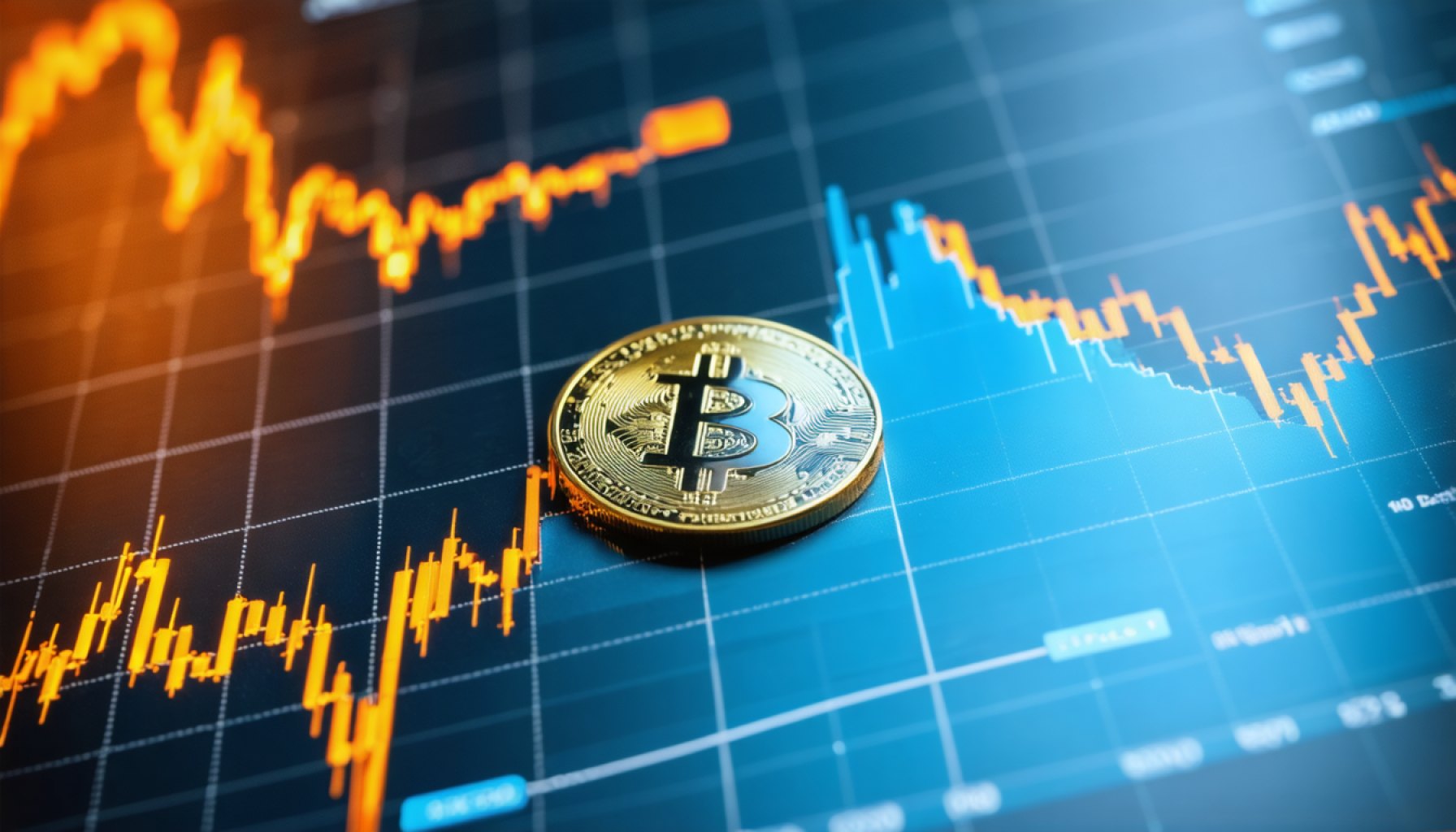- New U.S. tariffs, set at 10% on all foreign goods starting April 5, are impacting global markets and have affected cryptocurrency values, including XRP, Bitcoin, and Ethereum.
- XRP declined by 4.7%, showing the sensitivity of cryptocurrencies to macroeconomic policies, a deviation from their reputation as immune to national policy changes.
- Reciprocal tariffs are expected to further strain international trade, affecting nations with trade deficits with the U.S., adding volatility to financial markets.
- The overarching impact suggests a shift in investment strategies, favoring stability over high-risk ventures, reflecting broader global economic complexities.
- Despite current price dips, XRP’s fundamentals remain relatively stable, but investor caution is likely to persist with the evolving geopolitical landscape.
- The intertwined nature of technology, trade, and economic strategy is crucial for understanding and navigating the future financial era.
As the bustling world of digital assets swirls with excitement and trepidation, recent revelations concerning tariffs are creating waves across markets, drawing investors into tighter grips. Against the backdrop of these shifting sands, the cryptocurrency known as XRP finds itself caught in a whirlwind, marking a downturn closely watched by traders and analysts alike.
The market tremors began with an announcement at the White House, where the Trump administration unveiled fresh tariffs destined to reshape the landscapes of international trade. Scheduled for implementation on April 5, these tariffs impose a 10% tax on all foreign goods entering the United States. Just days thereafter, a series of “reciprocal tariffs” will escalate tensions further, targeting imports from nations with substantial trade deficits vis-à-vis the U.S.
This bold policy shift, intended to revitalize American manufacturing, sent ripples across financial markets. Stocks wobbled, and the once-steadfast fortresses of Bitcoin, Ethereum, and XRP trembled in solidarity. As of late Thursday, XRP had receded by approximately 4.7%, aligning with Bitcoin’s 5.1% decline and a sharper 5.9% retreat from Ethereum.
For investors, the impact of these tariffs extends beyond mere metrics. The broader message underscores an evolving narrative where macroeconomic dynamics wield significant influence over cryptocurrencies—once hailed as havens immune to national policy shifts. The dwindling enthusiasm for speculative ventures, spurred by external circumstances, hints at a heightened awareness of global complexities.
Despite XRP’s dip, the token’s fundamentals remain largely unshaken by direct tariff implications. Yet, the psychological bearings on investment strategies are undeniable. The new trade policies may nudge investors toward caution, promoting stability over high-risk endeavors—a reality that could persist as the geopolitical playbooks unfold.
As market participants eye the horizon, navigating this unpredictable odyssey requires astute balance—embracing resilience in the face of unforeseen tempests. The writ large of the evolving crypto landscape reveals a crucial takeaway: the nexus of technology, trade, and economic strategy is more intertwined than ever, and those who deftly chart its course stand to shape tomorrow’s financial era.
Can XRP Weather the Storm of Tariffs? Insights on the Impact of Global Trade Shifts
Understanding the Tariff Impact on Cryptocurrency
The recent tariff announcements by the Trump administration have introduced significant uncertainty into global markets. These tariffs, aimed at bolstering U.S. manufacturing by imposing a 10% tax on foreign imports starting April 5, are part of broader trade tensions that affect not only traditional markets but also digital currencies like XRP.
Global Economic Trends and Ripple (XRP)
1. Macro Effects on Cryptocurrencies: Historically, cryptocurrencies were perceived as decoupled from traditional financial markets, acting as hedges against economic instability. However, current trends highlight a stronger correlation with geopolitical and macroeconomic events, suggesting that cryptocurrencies are not as insulated as previously thought.
2. Sector-Wide Declines: As noted, XRP experienced a 4.7% decline, mirroring setbacks seen with Bitcoin and Ethereum. This sector-wide movement underscores the interconnectedness of the cryptocurrency market amidst global economic policies.
Strategies for Cryptocurrency Investors
– Diversification: Given the volatility introduced by geopolitical events, diversifying portfolios to include a mix of stablecoins and other assets might mitigate risk. Explore investments not solely dependent on speculative fervor.
– Long-term Holding: Consider the fundamentals of XRP and other cryptocurrencies that have strong utility and partnerships. Ripple’s use case in cross-border payments remains robust despite market fluctuations.
– Stay Informed: Regularly follow updates on international trade policies and understand their broader implications on the global economy and digital finance.
Market Forecasts and Industry Trends
1. Increasing Trade Tensions: If trade conflicts persist, expect cryptocurrencies to remain sensitive to these developments. Potential trade wars could further destabilize global markets, influencing both fiat and digital currencies.
2. Institutional Involvement: As the market matures, institutional investors may play a larger role, seeking regulatory clarity and stability before increasing cryptocurrency holdings.
Real-World Use Cases for XRP
Ripple’s focus on facilitating instant cross-border payments via its technology creates tangible benefits for financial institutions. This utility could insulate XRP somewhat from speculative market pressures and geopolitical events in the long-term.
Pros & Cons Overview
– Pros:
– Utility in Payments: XRP’s efficiency in cross-border transactions is a strong selling point.
– Partnerships: Ripple’s collaborations with financial entities enhance its credibility and adoption.
– Cons:
– Market Volatility: Subject to fluctuations from both internal industry changes and external geopolitical factors.
– Regulatory Risks: Increased scrutiny from regulatory bodies can affect the broader cryptocurrency landscape.
Actionable Recommendations for Investors
– Risk Assessment: Continually reassess the risk profile of your cryptocurrency investments in light of global economic policies.
– Informed Decision-Making: Utilize reliable financial news sources and expert opinions to guide your investment strategy.
– Community Engagement: Engage with cryptocurrency communities and forums to share insights and strategies.
For more insights on Ripple and cryptocurrency investments, visit Ripple or explore cryptocurrency-related updates on CoinDesk.
